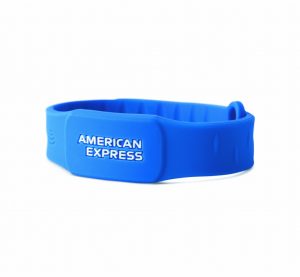American Express Co. formed its Digital Labs unit less than a year ago, and it has plenty to do as it evaluates new payment forms and new ways to attract cardholders and merchants.
Digital Labs is concerned with digital payments, digital ways of engaging with cardholders, and research and development, according to Patrick Dostal, vice president of product development in the unit. Dostal headlined a session dubbed “Payments—Not on Plastic” at last week’s Western States Acquirers Association annual conference in Scottsdale, Ariz.
Experiments in the Digital Labs involve wearables (the company at the recent US Open Tennis Championships unveiled its Amex Band, a wristband enabled for contactless payments), the Internet of Things, augmented reality, and other concepts on the frontiers of payments and loyalty programs. “We’re very keen on experiences for our cardholders, not just processing payments, not just lending,” Dostal said.

Dostal added that AmEx is working with merchant acquirers, independent software vendors, and other firms to develop new services. “More often than not we don’t own the distribution of payments or technology at the point of sale,” he said. “That’s owned by other parts of the ecosystem. If we’re not partnering in that area of the business there’s a lot of opportunity that’s missed beyond just processing payments.”
Some of the stuff the Labs unit is investigating is not always cutting edge technologically, like quick-response codes, but still could enhance the experiences of AmEx cardholders. Closed-loop mobile wallets from merchants such as Starbucks Corp. rely on QR codes for contactless payments, and Chinese mobile-payment firms use them extensively. But most proponents of general-purpose mobile wallets in the U.S. prefer near-field communication technology because of its speed and high security. AmEx has mobile wallets in Canada and the United Kingdom that use NFC, but the version in India uses both NFC and QR codes.
Some may sneer at QR codes, but the technology gets the job done, especially when the telecommunications infrastructure needed for NFC isn’t present, according to Dostal. “If you had asked me [earlier] that QR codes would be big, I would have laughed,” he said. But “for some markets, particularly without connectivity, it’s the right solution.”
AmEx is trying to see if there are lessons it can learn from merchant wallets that use QR codes, such those from Starbucks and Walmart Inc., or the Chase Pay service from banking giant JPMorgan Chase & Co. “There’s examples of it happening; whether or not those things will scale, or something will surpass it, remains to be seen,” Dostal said. “We have a blindfold and handful of darts, and so you just kind of like throw all of them and hope that one of them sticks.”
AmEx is looking for new technologies and programs that simultaneously reward its cardholders and drive sales for AmEx-accepting businesses. But working on rewards programs with merchants, especially when more than one merchant is involved, can be a challenge, as AmEx found out with its Plenti multi-merchant rewards program. AmEx pulled the plug on the three-year-old program in July . “It was very tough to get some traction,” said Dostal. “Getting all of the retail players to play together, with us specifically, is a very tough venture.”





